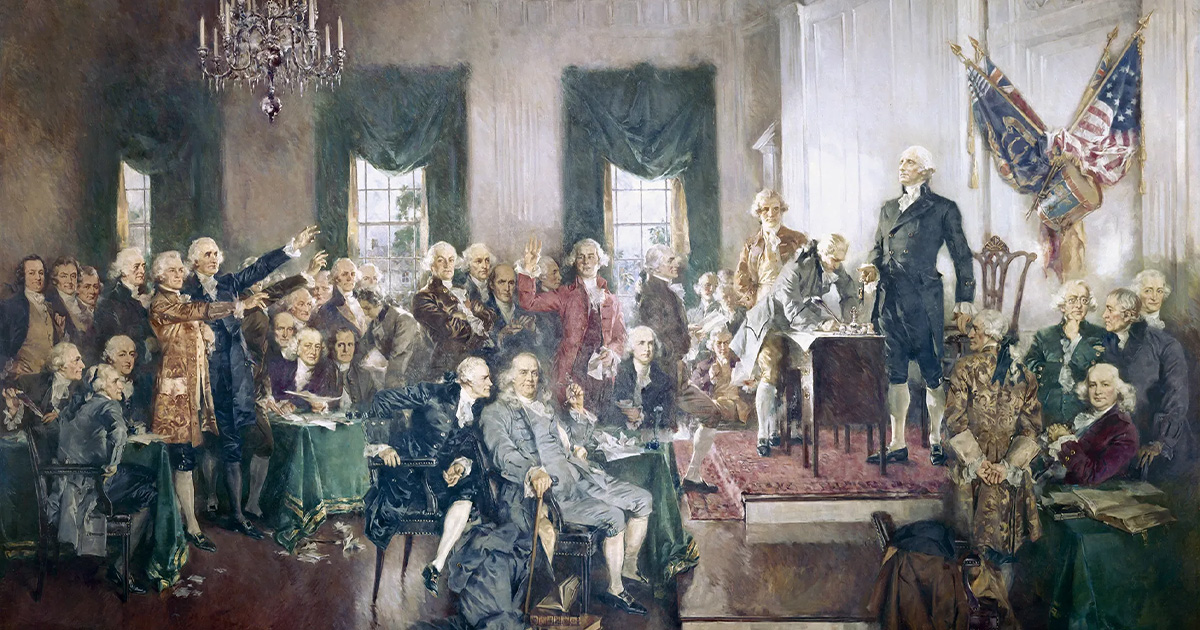Sept. 17 is Constitution Day, set aside to commemorate what it took to bring the U.S. Constitution to life and a time to pledge to protect and defend it. Our law of the land, revered as the foundational document of American democracy, has been amended just 27 times since its ratification in 1787. This is no accident: The Framers made the amendment process rigorous so that changes to our nation’s highest law would require broad consensus.
Yet, in today’s hyperpartisan climate, reaching that level of agreement has become exceedingly complex, making constitutional amendments almost impossible – even in an ever-changing, fast-moving society of nearly 350 million people. Will we, as Americans, ever amend it again?
A high bar – by necessity
It’s difficult for a reason: To amend our Constitution, a proposed amendment must either be approved by a two-thirds majority in both the House of Representatives and the Senate or be kickstarted by a constitutional convention called for by two-thirds of state legislatures (an intentionally vague and open-ended method that has rightly never been used, in our opinion).
Once proposed, an amendment must be ratified by three-fourths of the states. This daunting process was designed to enshrine only amendments with overwhelming support across diverse regions and political views.
Today, this consensus is more challenging than ever to achieve. The deepening divide between political parties, the rise of extreme partisanship, and a predictably polarized electorate mean that even widely popular ideas struggle to pass through the necessary legislative hurdles. The modern political landscape stands in stark contrast to the relatively bipartisan support seen in past amendments, like the 26th Amendment, which lowered the voting age to 18 during the Vietnam War.
Failed amendments
Numerous attempts to amend the Constitution have fallen short over the centuries, often reflecting the times’ social, political, and cultural divides. Today, some seem downright quaint: a proposal in 1838 to ban anyone would have prohibited anyone involved in a duel from holding federal office; or an 1891 attempt to change the country’s name to “The United States of the Earth.” More recently, one of the most notable failures is the Equal Rights Amendment, or ERA. First proposed in 1923 and finally passed by Congress in 1972, the ERA sought to guarantee equal rights for all citizens, regardless of sex. Despite renewed efforts in recent years to revive the ERA, its failure highlights the difficulties in overcoming entrenched opposition, even for an amendment with broad initial support.
The Flag Desecration Amendment, which would have criminalized burning or desecrating the American flag, also failed to garner widespread support. Despite passing in the House multiple times, it has repeatedly failed to secure the necessary two-thirds majority in the Senate – revealing how even amendments to address deeply emotional or patriotic issues can falter.
Modern challenges
Clearly, American political parties are more ideologically rigid and divided than they have been for much of American history, which leaves little room for compromise. Plus, special interests wield immense power to shape public opinion and pressure lawmakers, making it harder for grassroots movements to gain momentum.
Increasingly, media fragmentation also plays a role. The echo chambers created by social media and partisan news networks exacerbate divisions, making it harder to build the broad-based coalitions required for constitutional amendments. In addition, the rise of judicial activism, where courts interpret the Constitution in a way that effectively changes its application, has led some to question the need for formal amendments at all.
Will it ever happen again?
Still, that hasn’t stopped Americans from proposing our law of the land get a makeover. One that has gained attention is overturning the Supreme Court’s 2010 decision in Citizens United v. FEC, which allowed unlimited political spending by corporations and unions. Critics argue that this ruling undermines democracy by giving disproportionate influence to wealthy individuals and organizations, and some lawmakers have called for an amendment to rein in campaign finance laws.
Others are seeking the abolition of the Electoral College, the mechanism to select our president every four years. Many Americans are frustrated with the current state-by-state allocation system, which has led to five instances where the candidate who won the popular vote did not become president. This issue has sparked calls for reforms so that every vote counts equally, though achieving the political will to amend the Constitution in this way would be a monumental task.
Finally, advocates for congressional term limits argue that such limits would reduce corruption and increase accountability in Washington. However, opponents claim such limits could deprive Congress of experienced legislators and empower lobbyists and unelected officials.
A path forward
Though amending our Constitution may be more challenging today than ever, the process remains vital for addressing systemic issues with U.S. democracy. While the challenges are significant, the history of constitutional amendments shows that with enough public support and political will, even the most contentious issues can eventually lead to lasting change. In future eras, constitutional amendments can continue to be an avenue for responding to the evolving needs of American society — provided, of course, that we can muster the unity needed to achieve them.
More on Constitution Day
The Constitution Day Super-Quiz!
Five ways to Celebrate our law of the land
The Constitution on film
The persistent power of the Preamble


